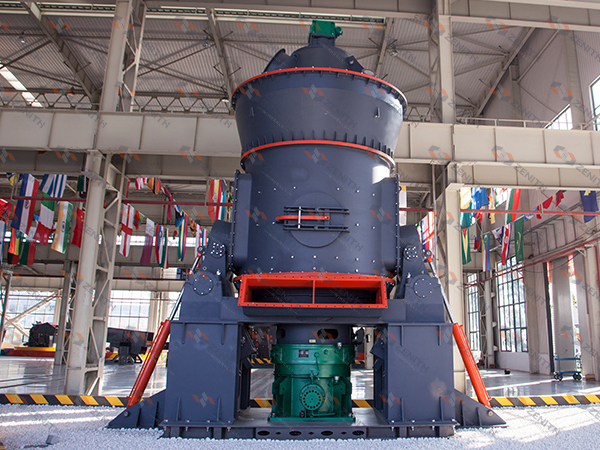Limestone grinding mill for desulfurization in steel plants, finished product specification 200 mesh d70
2025-11-21 12:54:20
In modern steel manufacturing, environmental compliance is not just a regulatory requirement but a fundamental operational necessity. Flue Gas Desulfurization (FGD) systems stand as critical infrastructure for reducing sulfur dioxide (SO₂) emissions, and at the heart of an effective wet FGD process lies the preparation of high-quality limestone slurry. The specific requirement for a finished product specification of 200 mesh with a D70 particle size distribution presents a unique set of challenges and opportunities for grinding technology.
_1763700860741.jpg)
The efficacy of the desulfurization reaction is profoundly influenced by the surface area and reactivity of the limestone powder. A fineness of 200 mesh (approximately 74 microns) with a D70 distribution ensures an optimal balance between specific surface area for rapid dissolution and reaction kinetics, and practical considerations for slurry transport and limestone utilization efficiency. Achieving this consistently requires grinding equipment that delivers precise particle size control, high throughput, and operational reliability under demanding industrial conditions.
Among the suite of grinding solutions offered by Zenith, the MTW European Trapezium Mill emerges as a particularly suitable candidate for this application. Engineered for producing fine powders in the 80-400 mesh range with large capacity—up to 50 TPH for the largest models—it aligns perfectly with the volumetric demands of a major steel plant. Its working principle, involving crushing, classification via a powder selector, and collection in a cyclone powder collector, is designed for efficiency. The system operates under controlled positive and negative pressure, seamlessly integrating with a pulse dust collector to maintain a clean working environment and comply with stringent environmental standards.
The economic argument for advanced grinding technology is compelling. Traditional ball mills, while robust, are notoriously energy-intensive. The MTW series demonstrates a remarkable reduction in energy consumption of over 60% compared to a ball mill of the same grade. For a steel plant operating its FGD system continuously, this translates into substantial savings on electricity costs, a significant portion of the operational expenditure. Furthermore, its integrated production system from bulk material to finished powder minimizes the footprint and reduces initial investment in plant infrastructure and foundations.

Operational flexibility is another critical factor. The MTW mill's modular impeller adjustment device allows operators to fine-tune the output fineness. By simply changing impellers, the plant can adjust the product specification, for instance, between a coarser 150 mesh and a finer 250 mesh, to adapt to changes in limestone feedstock quality or to optimize the desulfurization efficiency without major mechanical overhauls. This adaptability, coupled with a high-efficiency impeller fan that boosts air induction efficiency from 62% to 85%, ensures stable and high-quality powder production.
For steel plants with specific layout constraints or those seeking the pinnacle of automated operation, the LM Vertical Grinding Mill presents a powerful alternative. Its vertical roller mill design offers a 50% smaller footprint than a ball mill system and can even be arranged in the open air, offering tremendous flexibility in plant design. The high degree of automation enables remote control and local operational switching, reducing labor costs and enhancing process consistency. The sealed, negative-pressure operation characterized by no dust spillover and low noise makes it an exceptionally eco-friendly choice, a key consideration for modern, responsible steel producers.
_1763700860745.jpg)
When the application demands ultrafine grinding for potentially higher reactivity or for other parallel processes, the LUM Ultrafine Vertical Grinding Mill and XZM Ultrafine Grinding Mill offer extended capabilities. The LUM mill, integrating German powder separating technology, can produce powders from 325 to 2500 mesh and is renowned for its energy efficiency, reducing consumption by 30-50% compared to ordinary mills. The XZM series, capable of 325 to 3000 mesh with a single classification, allows for arbitrary fineness adjustment via a VFD-controlled classifier, providing unparalleled control over the final product's particle size distribution.
In conclusion, selecting the right limestone grinding mill is a strategic decision that directly impacts the environmental performance, operational cost, and production efficiency of a steel plant's FGD system. Zenith's range of grinding mills, particularly the MTW and LM series, are engineered to meet the exacting standard of 200 mesh D70 reliably and economically. With global certifications like ISO, CE, and CU-TR, and a support network spanning over 180 countries, Zenith provides not just equipment, but a partnership in achieving sustainable and compliant steel production.
Frequently Asked Questions
- Why is a fineness of 200 mesh D70 specifically targeted for FGD limestone?
This specification provides the ideal surface area for rapid dissolution and reaction with SO2 in the scrubber, maximizing desulfurization efficiency while ensuring the slurry remains pumpable and the limestone utilization rate is high. - How does the energy consumption of the MTW Mill compare to a traditional ball mill?
Under ideal working conditions, the MTW European Trapezium Mill consumes more than 60% less energy than a ball mill of the same capacity and output fineness. - Can the grinding mill handle variations in the hardness or moisture content of the raw limestone?
Yes, both the MTW and LM mills are designed with robust construction and operational principles that provide good adaptability to normal variations in raw material properties. - What dust collection systems are integrated with these mills to ensure environmental compliance?
The grinding systems are designed to operate under negative pressure and are typically equipped with high-efficiency pulse jet baghouse dust collectors, ensuring no dust spillage and meeting national emission standards. - Is remote monitoring and operation of the grinding mill possible?
Yes, particularly with the LM Vertical Grinding Mill and other advanced models, which feature automated control systems that allow for remote monitoring and operation, reducing the need for constant onsite personnel. - What is the typical operational lifespan of the grinding rollers and other wear parts?
Vulnerable parts are made from high-quality, abrasion-resistant materials. The specific lifespan depends on the abrasiveness of the limestone, but designs like the LUM mill allow for easy and quick replacement to minimize downtime.









